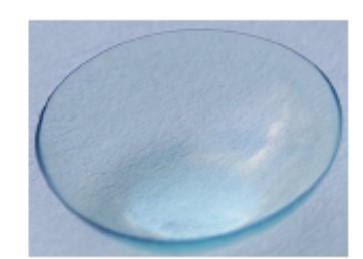Precision7, Precision7 for Astigmatism, Precision7 Multifocal, Precision7 Multifocal Toric (serafilcon A) – P220007
This is a brief overview of information related to FDA’s approval to market this product. See the links below to the Summary of Safety and Effectiveness Data (SSED) and product labeling for more complete information on this product, its indications for use, and the basis for FDA’s approval.
Product Name: Precision7; Precision7 for Astigmatism; Precision7 Multifocal; Precision7 Multifocal Toric (serafilcon A) Soft Contact Lenses
PMA Applicant: Alcon Laboratories, Inc.
Address: 6201 South Freeway, Fort Worth, TX 76134-2099
Approval Date: April 25, 2023
Approval Letter: Approval Order
What is it?
Precision7, Precision7 for Astigmatism, Precision7 Multifocal, Precision7 Multifocal Toric (serafilcon A) soft contact lenses (Precision7 lenses) can be worn for up to 6 nights/7 days without needing to be removed.
How does it work?
Precision7 lenses are stored wet, then placed on the eye. The lens is intended to correct vision by focusing light on the back of the eye, allowing the person wearing it to see a clear image.
When is it used?
Precision7 lenses require an eye doctor’s visit and prescription. The lens is used to treat near-sightedness (myopia), far-sightedness (hyperopia), and blurred or distorted vision due to an irregular curvature of the cornea, or front surface of your eye (astigmatism). These lenses also correct an age-related condition called presbyopia that leads to a gradual inability to see things clearly close-up, for example, when reading.
What will it accomplish?
Precision7 lenses are intended to correct the wearer’s blurred or distorted vision. They can be worn overnight without the need to remove them for up to 6 nights/7 days. Of 513 people who completed a clinical study (257 received Precision7 group and 256 were in the control group) more than 97% of eyes achieved at least 20/20 vision when using the Precision7 contact lens. The study also showed that this lens can be worn for up to 6 nights/7 days with limited negative effects on the eyes (ocular adverse events occurred at a rate of 5%, or in 29/582 eyes) and no other serious adverse events.
When should it not be used?
Contact lenses should not be worn under certain general health and eye conditions. These include the following:
- Inflammation, swelling, or infection in or around the eye or eyelids.
- Active disease, injury, or other problems affecting the front part of the eye or the eyelids.
- Excessive dryness of the eyes that makes contact lens wear uncomfortable.
- Any condition that reduces corneal sensitivity.
- Diseases that affect the entire body (systemic diseases) that may be impacted by lens wear or interfere with lens wear.
- Allergic conditions, reactions, or eye irritation caused or made worse by lens wear or specific preservatives found in lens care products.
- The use of any medicine, including some eye medicines, that shouldn’t be used with, or that interfere with, contact lens wear.
- If eyes become red or irritated.
- If you have had frequent problems while wearing contact lenses, for example repeat eye infections, redness, swelling, discomfort, or irritation. Before resuming wear, discuss these problems with your eye care professional and follow all recommendations.
Only an eye care professional can determine if continued contact lens wear is right for you.
Additional information (including warnings, precautions, and adverse events):
- Summary of Safety and Effectiveness Data (SSED)
- Labeling (Patient Instruction Booklet)
- Labeling Part 2
- PMA Database Entry

